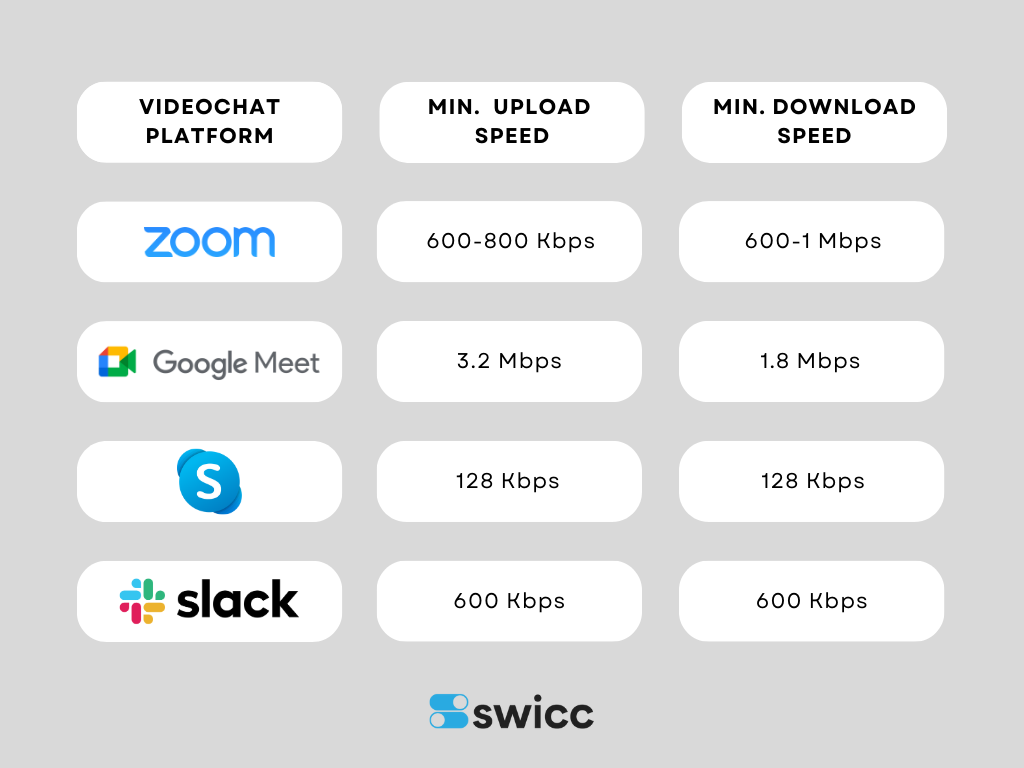Broadband for Working from Home: All you Need to Know
Reading Time: 7 minutes
Learn how to prepare for working from home. What is the best internet speed for working from home, best providers & more.

As more of us embrace remote work, having a reliable and speedy internet connection is essential to stay productive and connected. Yet, many of us encounter common broadband hiccups that can throw a wrench in our day. This guide dives into those pesky problems and offers practical solutions to boost your home broadband.
Let's be honest—waiting ages for an email can be frustrating. But maybe even worse is missing out on the latest Slack gossip or dealing with a frozen Zoom screen during an important meeting. Here’s how to tackle these issues and keep your internet running smoothly.
How to prepare for working from home
When talking about working-from-home broadband, we instantly consider the internet speed. However, speed without reliability doesn't mean much. If your package for your working-from-home broadband promises fast speeds but doesn't offer a stable connection, it's time to reconsider. As long as you tick these two boxes, you should be golden.
Here is what you need to know before setting up your workstation at home:
- Check with your employer. Some companies may have specific internet speed requirements for remote workers and policies on the internet connection you can use (e.g., cable, DSL, or fibre).
- Determine your internet usage: You can use online speed tests to check your internet speed. The results will show you the download and upload speeds. As a rule of thumb, you should have at least 25 Mbps download and 3 Mbps upload speeds to work from home. However, this may vary depending on your work requirements.
- Consider the number of devices: If you have multiple devices connected to your home internet, such as computers, smartphones, and tablets, the internet speed will be shared among them. Therefore, you may need a higher internet speed to accommodate all your devices.
- Upgrade your internet plan: If your current internet speed is insufficient, you may need to upgrade your plan. Most internet service providers offer different plans with varying speeds and prices. Compare different plans and choose one that suits your needs and budget.
- Improve your home network: Sometimes, slow internet speeds can be due to network issues within your home. You can improve your home network by positioning your router in a central location, minimising interference from other electronic devices, and using a wired connection instead of Wi-Fi.

How to optimise your broadband speed at home
Now that your workstation is all set, you will want to optimise your connection and not fight over bandwidth with your kid gaming in the other room or your partner scrolling TikTok. And the good news is that there are a few really good tips to optimise your broadband connection without getting a headache in the process.
- Upgrade Your Equipment: Get the latest router and modem for better speeds.
- Optimize Placement: Place your router centrally and away from obstructions.
- Use Ethernet: For critical devices, a wired connection is more reliable.
- Limit Background Activities: Close unnecessary apps and tabs to free up bandwidth.
- Regular Maintenance: Restart your router periodically and keep your devices updated.
Let's dive into the most common issues you may encounter when you work from home, and how you can tackle them.
- Problem: Slow speeds can make everything from downloading files to video calls a hassle.
- Solution: Check your internet plan and consider upgrading if needed. Use tools our Speedtest to see your current speeds and talk to your provider if they’re not up to scratch.
- Problem: Frequent drops in connection can be incredibly disruptive.
- Solution: Ensure your modem and router are modern and placed centrally in your home. Restart your router regularly and check for any interference from other electronics.
- Problem: Some areas of your home might not get a strong Wi-Fi signal.
- Solution: Use a Wi-Fi range extender or mesh network to boost the signal. Moving your router to a more central location can also help.
- Problem: Multiple devices using the same network can slow things down.
- Solution: Set Quality of Service (QoS) rules on your router to prioritize work traffic. Schedule high-bandwidth activities for off-peak times.
How many Mbps do I need to work from home

The internet speed you need to work from home depends on the nature of your work. For instance, if your job involves downloading and uploading large files or streaming high-definition videos, you will need a higher internet speed than someone who only needs to check emails and do light web browsing. If you're a digital nomad, a freelance writer, or a solo entrepreneur, you probably won't need lightning-fast internet. But if you're a video editor, a graphic designer, or a gamer, you're going to need some serious speed, my friend.
In general, a good rule of thumb is to aim for at least 25 Mbps download and 3 Mbps upload speed. But if you want to be extra fancy, you can go for 100 Mbps download and 10 Mbps upload speed.
Is 100 Mbps good for working from home broadband
100 Mbps is a fast internet speed and should be more than enough for most work-from-home situations. With 100 Mbps, you can easily download and upload files, stream high-definition videos, and video conference without any lag. However, if you have multiple devices connected to the internet or a job involving heavy data usage, you may need to consider a higher internet speed.
Is 300 Mbps good for working from home broadband
If you are considering 300 Mbps for working from home, this is more than sufficient for most situations. 300 Mbps is a very fast internet speed and can handle heavy data usage, such as downloading and uploading large files, streaming 4K videos, and video conferencing with multiple participants.
However, keep in mind that higher internet speeds come with a higher price tag. If your work doesn't require such high speeds, you can save money by opting for a lower-speed plan as long as the working from home broadband package promises reliability.
Do you have the ideal internet speed for working from home?
If you work with multiple people at home, each person will add to the demand for the internet connection, and you will need a faster connection. For example, if two people are video conferencing at the same time, you will need a minimum of 10 Mbps download speed and 5 Mbps upload speed.
It's also important to consider the type of internet connection you have. There are two main types of internet connections: cable and fibre. Fibre connections are generally faster and more reliable than cable connections but may not be available in all areas.
Which internet providers are best for working from home in the UK?
If you're looking for the best internet providers for working from home in the UK, you've come to the right place. I'm here to help you navigate the high seas of internet service providers and find the best option.
First up, we have Virgin Media. With speeds of up to 1 Gbps, Virgin Media is a great choice if you need a fast and reliable internet connection for your work. They also offer a range of packages to suit different budgets and needs. Look up Virgin Media broadband deals 👆🏻
Next, we have BT. BT is a well-established provider with a solid reputation for reliability. They offer a range of packages, including superfast fibre broadband, and have a dedicated team to support business customers. Look up BT broadband deals 👆🏻
If you're looking for a more affordable option, you might want to check out TalkTalk. TalkTalk offers a range of packages to suit different needs and budgets, including fibre broadband options. Look up TalkTalk broadband deals 👆🏻
Finally, we have Sky Broadband. Sky offers a range of packages, including superfast fibre broadband, and has a good reputation for customer service. They also offer a range of add-ons, such as Sky TV, which might be of interest if you're looking for an all-in-one entertainment and internet package. Look up SKY broadband deals 👆🏻
Of course, there are other providers out there, and the best one for you will depend on your specific needs and location. Just pick a winner from below and see what they're offering in your area.
[INSERT BRAND CARDS FOR VM, BT, TALKTALK AND SKY WITH LINKS TO BB DEALS ON OUR WEBSITE]
Back to you
Pretty straightforward, right? You can create a seamless home office setup by tackling common issues like slow speeds, unstable connections, and Wi-Fi dead zones. Investing in modern equipment, optimising your network, and managing your bandwidth effectively will keep you connected and efficient. And if your current broadband package isn't giving, it's time to move on and take control. Check out the best broadband deals for working from home on our website and find a plan that suits your needs. Stay connected, stay productive!

